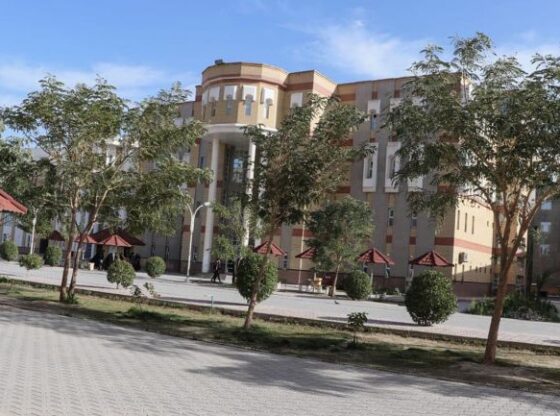Published On 20/11/2025
|
Last update: 13:24 (Mecca time)
The Impact Factor and Reference Citations of Arab Scientific Journals (ARCIF) announced in its tenth annual report for the year 2025 that the Egyptian Ain Shams University and the Iraqi University of Baghdad topped the list of Arab universities in the field of “research impact,” within indicators that measure the volume of Arab scientific production and its impact on the Arab academic scene.
The report issued by the “Maarifa” database for Arab scientific production and content is an Arab scientific project that constitutes a civilized alternative to Western indicators, and plays a pivotal role in removing Arab scientific production from the circle of marginalization to the reality of measurable “visible presence.”
Huge results by international standards
The “ARCIF 2025” report included an examination of about 5,500 scientific and research journals published in the Arabic language by about 1,500 scientific bodies, of which 1,272 journals succeeded in achieving 32 standards approved by “ARCIF,” which are compatible with global standards for international impact factors.
These journals were issued by 19 Arab countries, with the exception of Somalia, Djibouti, and the Comoros, in addition to 9 Western and Islamic countries where scientific journals are published in Arabic.
The report also reviewed data on more than 364,000 Arab authors, the production of 111,000 of whom (30.5%) were cited, through examining more than 960,000 scientific articles published in Arab journals.
Two indicators of research impact
The report adopted two main indicators: the first measures the number of citations achieved by authors affiliated with 1,281 Arab universities and scientific and research institutions, and the second measures the influence of 490 universities and institutions through the number of citations to articles published in their Arabic-language journals.
The results indicated that the top 10 universities are affiliated with 5 Arab countries: Egypt, Jordan, Iraq, Algeria, and Saudi Arabia.
Baghdad maintains the lead
In the first indicator, “Affiliate Author Citations,” the Iraqi University of Baghdad maintained first place with 15,055 citations from 5,524 articles by its researchers, followed by the Egyptian Ain Shams University with 13,571 citations from 3,048 articles, then King Saud University in Saudi Arabia with 11,297 citations from 2,325 articles.
The Egyptian University of Helwan came in fourth place (9,061 citations), the Yarmouk University of Jordan in fifth place (8,633 citations), and the University of Jordan in sixth place (8,592 citations).
Cairo University ranked seventh (8,403 citations), Algeria’s Kasdi Merbah Ouargla University ranked eighth (7,967 citations), Egypt’s Al-Azhar University ranked ninth (7,207 citations), and Algeria’s Mohamed Kheidar Biskra University ranked tenth (6,926 citations).
“Ain Shams” is the first publishing body
In the second indicator, “Citations to Journals Published by Universities,” the Egyptian Ain Shams University topped the list with 20,873 citations from 4,433 articles (an average of 4.71 citations per article).
It was followed by the University of Jordan with 16,970 citations from 3,134 articles (average of 5.41 citations per article), then the University of Baghdad with 15,888 citations from 5,749 articles (average of 2.76 citations per article).
The Algerian University of Kasdi Merbah Ouargla ranked fourth (15,226 citations), Cairo University ranked fifth (13,776 citations), and the Egyptian University of Assiut ranked sixth (11,262 citations).
The Palestinian Islamic University of Gaza ranked seventh with 11,203 citations (an average of 6.26 citations per article), which is the highest among the top ten.
Leading Egyptian and Algerian magazines
At the country level, Egypt ranked first in the Arab world in the overall influence factor, followed by Saudi Arabia.
But Algeria topped the list in terms of the number of accredited journals (426 journals), then Egypt (364 journals), Iraq (122 journals), Saudi Arabia (75 journals), and Jordan (45 journals).
ARCIF laboratories are subject to a supervisory and coordination council that includes representatives from the UNESCO Regional Office for Education in the Arab Countries in Beirut, the United Nations Commission for Western Asia (ESCWA), and the “Maarifa” database, in addition to a scientific committee of experts and academics with a leading reputation from several Arab and foreign countries.
ARCIF provides data through an advanced digital platform that allows access to various indicators and reports (reports of countries, institutions, researchers, and specialties) on its website, and a digital version of the 2025 report will be issued in PDF format before the end of this year.
Those responsible for the report stressed that the results of “ARCIF 2025” reflect significant growth in the “research impact” of Arab universities and scientific institutions despite the obstacles and challenges in the Arab region.
These results reflect the extent of benefit from Arab scientific production and the extent of its impact on shaping the scientific scene and the Arab scientific renaissance.

